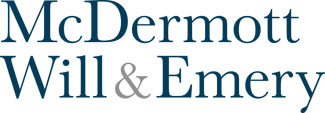
The facts behind the Supreme Court’s recent ruling in Monsanto v. Bowman are simple enough. Farmers are able to buy soybeans containing Monsanto’s patented glyphosate resistance technology under a license that permits them to plant and grow one generation of crops. Vernon Bowman skirted this program, however, by purchasing commodity soybeans from a grain elevator knowing that the seeds would nonetheless likely contain the very same Monsanto technology. He then planted the seeds, raised crops, and saved seeds from these crops to plant new crops. The Supreme Court held that Bowman’s actions infringed Monsanto’s patents because unlicensed growth of the seeds was a new making of the patented invention. Consequently, the doctrine of patent exhaustion did not provide any defense as to these new seeds.
This was not a surprising result for the biotechnology industry. The idea that patent rights in seed progeny are not exhausted by the original sale of their “parents” was well established in the United States, and is even codified in the European Biotechnology Directive.
The Court left us with a relatively clear answer regarding the scope of patent exhaustion related to seeds. The use of the purchased, licensed seeds for consumption and/or processing cannot be interfered with by the original seller, as the patent rights on those individual (sold) seeds have been exhausted. The planting and cultivation (i.e., replication) of those seeds, however, can only be done under a license from the patentee. In other words, even though someone sells you a bag of seed, you have no right to plant and grow that seed without a license (although there may be a good argument that the license should be implied in appropriate cases).
So, where does Bowman leave us when it comes to determining the infringement or enforceability of self-replication biotechnology patents outside of the agricultural context? For other patented self-replicating (or easily replicable) technologies, the circumstances may present more complicated questions.
Biotechnology inventions such as cell lines, bacteria, and other living material often must exist in a condition of continuous self-replication simply to be maintained for any use. Vectors, plasmids, etc., replicate within cells, and from generation to generation within host cells, allowing for production of vastly more nucleic acid copies than initially used for transfection. Even small linear nucleic acids such as those used for primers and probes may be “replicated” to generate large quantities relatively easily using PCR or other methods in molecular biology. In each case, (cells, viruses, vectors, probes), something analogous to planting, watering, cultivating, is required. In view of the Bowman decision, the question persists as to whether such replication will be permitted or considered an unlicensed “remanufacture” or new making of the original, patented item.
In this regard, we note that Justice Kagan left open the possibility that the replication might be “a necessary but incidental step in using the item for another purpose.”[1] Certainly, the replication contemplated in this part of the opinion is that which must necessarily occur in connection with some authorized practice of the invention. Maintenance of culture cells, for example, where the cells are necessarily replicating only for the purpose of maintaining the culture during its authorized use or in preparation for such use is one example that seems to fit comfortably within this aspect of the Court’s opinion. In other words, a license for multigenerational use of a cell line may be implied in these circumstances, even if it is not given expressly.
Other technologies may not present quite so simple an analysis. DNA vectors can be used for a variety of purposes, not all of which require replication. For example, vectors can be used as probes or markers, they can be used to transport sequences of interest for further manipulation, or they can be used as immunizing agents. None of these uses require or specifically contemplate replication. Of course, some vectors are used in contexts where replication is likely or assumed (e.g., transfection of cells or bacteria, generation of transgenic tissues or organisms). The consideration of vectors under Bowman will, therefore, likely depend more heavily on context, including the sales and licensing practices of the patentee.
Some commentators have characterized the Bowman holding as “limited to the facts,” pointing to the Court’s comment that “[o]ur holding today is limited – addressing the situation before us, rather than every one involving a self-replicating technology.”[2] Attempts to limit Bowman to its specific facts should be taken carefully. Indeed, the Court cut through much of the surrounding facts to reach its core holding – that replication is a new making of the patented invention and an infringement in the absences of a license. Accordingly, it does appear that the holding may address the most important “situation” for all self-replicating technologies, even if it does not address all of the context-dependent permutations of the facts involving self-replication technologies.
Consequently, assertions of “self-replicating” material turning otherwise innocent parties into patent infringers are simply not credible. To paraphrase the Court in Bowman, the soybeans Bowman took home from the grain elevator didn’t plant themselves, didn’t spray themselves with glyphosate, and didn’t otherwise cultivate themselves to produce the unauthorized crop. Similarly, in biotechnology, it is likely that unauthorized and infringing activity will quite clearly fit the Monsanto “situation” and be easily recognizable as infringement. For example, maintaining an initial cell culture in the hands of the licensee-purchaser, although it also involves replication, should be easily distinguished from distribution of the culture (or vectors, or phage, etc.) to unauthorized third parties.
Nonetheless, given the potential for unnecessarily complex analysis and possible confusion of courts, patent holders should carefully consider how their license provisions may be used to clarify not only express grant and restriction provisions, but also how the license may shape an understanding of how the invention works and its intended use. The dividing line between authorized and infringing activity will be influenced by context, and parties are well advised to define that context by the licensing contract and not rely on the bare contours of the doctrine of patent exhaustion. The license is the place where the parties involved, the patent holder and the licensee, have a chance to agree on what is authorized and what is not. It is also the place where the patent holder has an opportunity to shape future interpretations of what the practice of the invention encompasses and what it does not. An effort to be as comprehensive as possible in the positive, express grant of the license may be as important as the restrictions that are expressly stated. If, as is quite possible, the restrictions fail to contemplate the full scope of intended unauthorized activities, a grant of authorization that is more specific may allow a court to more accurately determine what is “necessary but incidental” to the authorized practice of the invention and what is not.
The Bowman decision provides the biotech community some much needed clarity regarding self-replicating inventions. Perhaps equally important, the Court displayed a keen sensitivity to the negative implications of an overly broad exhaustion doctrine. While there will undoubtedly be further development of the law as it is applied to different technologies, the fundamental ability to control self-replicating inventions at each generation through the grant or withholding of a license places authority where it belongs – with the patentee. And, by reducing the need for complex work-arounds, the clarified authority and more calibrated level of control provided by theBowman decision should facilitate licensing negotiations to the benefit of both parties.
This article was written by guest bloggers Christopher Jeffers, Ph.D., Carl Massey, Jr., Thomas F. Poché, Ph.D.
[1]Although the Court referenced the copyright statute, 17 U.S.C. § 117(a)(1), in conjunction with this “necessary but incidental” fact pattern, the statute actually considers only computer programs and states there is no infringement if “a new copy or adaptation is created as an essential step in the utilization of the computer programin conjunction with a machine and that it is used in no other manner.” From this, better language in the Bowmanopinion might have been “necessary and essential” or even “necessary and incidental.”
[2] Bowman Op. at 10.
of
Like this:
Like Loading...








